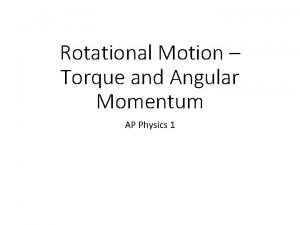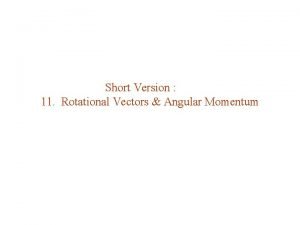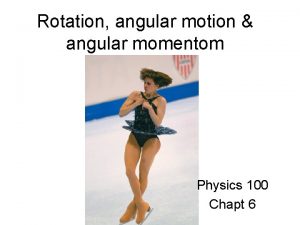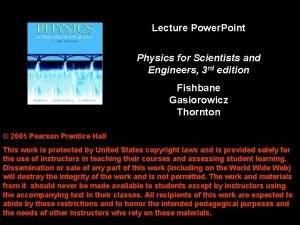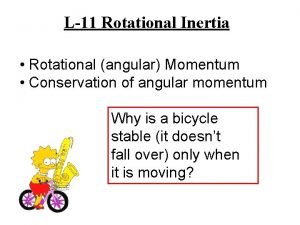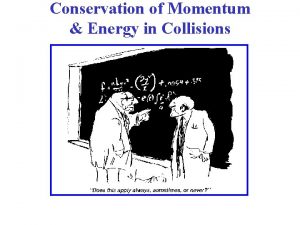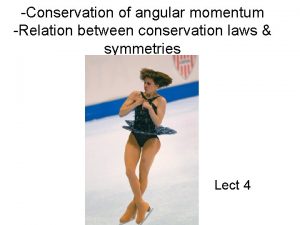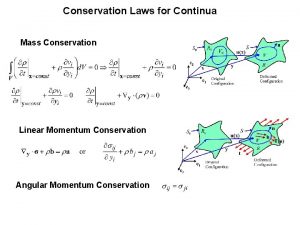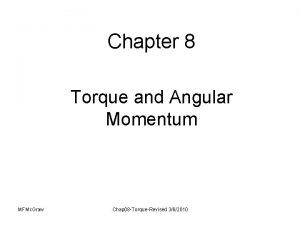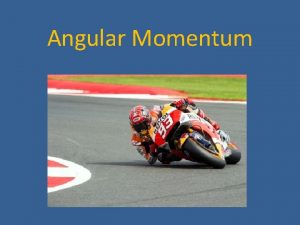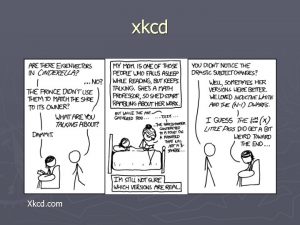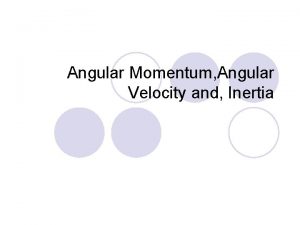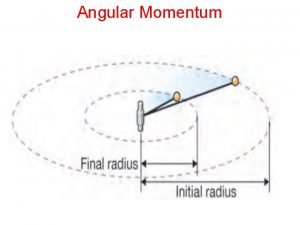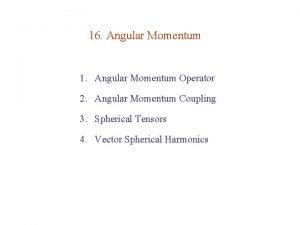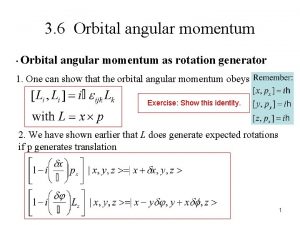xkcd Xkcd com Section 3 Recap Angular momentum

![Section 3 Recap ► ► ► Angular momentum commutators: § [Jx, Jy] = iħJz Section 3 Recap ► ► ► Angular momentum commutators: § [Jx, Jy] = iħJz](https://slidetodoc.com/presentation_image_h2/ded8ec25b953a6a1601b87e10b081a42/image-2.jpg)








- Slides: 10

xkcd Xkcd. com
![Section 3 Recap Angular momentum commutators Jx Jy iħJz Section 3 Recap ► ► ► Angular momentum commutators: § [Jx, Jy] = iħJz](https://slidetodoc.com/presentation_image_h2/ded8ec25b953a6a1601b87e10b081a42/image-2.jpg)
Section 3 Recap ► ► ► Angular momentum commutators: § [Jx, Jy] = iħJz etc Total ang. Mom. Operator: J 2= Jx 2+ Jy 2 +Jz 2 Ladder operators: § J+ = Jx + i Jy , J+| j, m = c+( j, m) | j, m +1 (=0 if m = j) § J− = Jx − i Jy , J−| j, m = c−( j, m) | j, m − 1 (=0 if m = −j) § c ±( j, m) = √[ j (j +1)−m (m ± 1)]ħ Eigenvalues § J 2: j ( j +1)ħ 2, j integer or half-integer § Jz: m ħ, (−j ≤ m ≤ j ) in steps of 1 Matrix elements: raising (lowering) only non-zero on upper (lower) off-diagonal Eigenvector ordering convention for angular momentum: First eigenvector is largest angular momentum (m = j ).

Section 3 Recap ► Direct products ► Orbital angular momentum acts on ( , ), factor space of 3 -D space (r, , ). § Of vector spaces, of the vectors in them, of operators operating on them § Operator on first space (A 1) corresponds to A 1 I on direct product space. § Extra constraint on total angular momentum quantum number ℓ: integer, not half-integer Spin angular momentum acts on its own vector space, independent of 3 -D wave function. § Fundamental particles have definite total spin S 2: never changes. ► Spin-half: 2 -D vector space: ► § Spin in any one direction is superposition of spin up & spin down along any other direction § Every superposition corresponds to definite spin in some direction or other. § Pauli spin matrices (Neat algebraic properties)

Section 3 Recap 2 rotation of spin-half particle reverses sign of wave function: need 4 rotation to get back to original. ► Magnetic resonance example (Rabi precession): spin precession in a fixed field, modulated by rotating field. ► Addition of angular momentum ► § § Work in direct product space of components being summed J = |j 1+j 2| to |j 1−j 2| Triplet and singlet states (sum of two spin-halfs) Find Clebsch-Gordan coefficients: amplitude of total angular momentum eigenstates |J, M in terms of the simple direct products of component ang. mom. states, |j 1, m 1 |j 2, m 2 : § CG Coeffs = 0 unless M = m 1+m 2 § Stretched states:

Section 4 Recap ► Functions as vectors in “function space” ► Many ∞-D spaces, for different classes of functions ► Overlap integral is inner product: § Infinite-dimensional in most cases § 1, 2 3 or more coordinates § Continuous or allowed jumps § Normalizable, i. e. square integrable (L 2) or not… § where fi , gi are amplitudes of Fourier components of f & g. ► Discontinuous functions require fussy treatment ► Operators with continuous eigenvalues have unnormalizable eigenfunctions (delta functions, fourier components) § Don’t represent physically possible wave functions. § Not physically observable but mathematically convenient.

Recap 4 continued of operator: D(A) is subspace of vectors |v for which A|v is in original space ► For operator A with continuous eigenvalues ► Domain § Completeness relation/diagonalised form of operator.

Recap 4 ► Position operator x : § § § In position representation, multiply wave function by x Eigenfunctions (unphysical) are Dirac delta-functions. Best considered as bras, not kets: ► ► x | = ( x ) Wavenumber operator K : § § In position representation: -i d/dx. Eigenfunctions in position representation are pure complex waves: e ikx/ 2 In wavenumber representation: delta-functions. Hermitian if wavefunction tends to zero at infinity (as do all normalizable functions). ► Fourier transform is a unitary transform: ► In QM, momentum p = ħK § Change of basis from position to wavenumber basis

Recap 5 ► Simple harmonic oscillator ► H = p 2/ 2 m + x 2(m 2/ 2) § a = Ax + i B p = ħ (a†a + ½) for suitable A, B ► a†a= N is number operator, eigenvalues 0, 1, 2, … ► Total energy = (n + ½) ħ ► a† = creation operator: adds a quantum ► a = annihilation operator: removes a quantum ► Operators for a†, a, x, p, H in energy/number basis represented by infinite matrices, non-zero only on the off-diagonals (linking states separated by one quantum).

Recap 5 Represent x |a|0 = 0, or a† |n-1 = n |n , in position basis, then solve for eigenfunctions x |0 = 0(x), x |1 = 1(x) etc ► Harmonic oscillator illustrates quantum-classical transition at high quantum number n. Truly classical behaviour (observable change with time) requires physical state to be a superposition of energy states. ►

Recap 6 Vector space of N-particle system is direct product of single-particle spaces. ► States are separable if they can be written as a simple direct product ► § Most states are superpositions of simple direct products: Entanglement. ► Entangled Bohm states (& similar) illustrate non-locality implied by wave-function collapse: violates Bell inequalities § Verified experimentally ► ► Quantum Information Processing: based on qubits (two-level systems). In principle can solve some problems exponentially faster than classical computers. § Not yet feasible due to decoherence: at most a handful of qubits operated successfully as a unit. ► Quantum key distribution already viable technology: guaranteed detection of any evesdropper on exchange of cipher key.
